#The Temple of Artemis
Text
Time Travel Question 18: Ancient History VIII and Earlier
These Questions are the result of suggestions from the previous iteration.
This category may include suggestions made too late to fall into the correct grouping.
Please add new suggestions below if you have them for future consideration.
#Bering Straight Land Bridge#Ancient Israel#Stempunk#Ancient Egypt#Alexandria#Automata#Time Travel#Paleolithic#Neolithic#Domestication#History of Food#Gaul#The Temple of Artemis#Ancient World#Olympia#Halicarnassus#Malaysia
66 notes
·
View notes
Text
youtube
The Temple of Artemis (250 AD) Ambient Music
#the temple of artemis#artemis#temple#greek mythology#greek gods#greek tumblr#ancient greek#ancient greece#greece#greek art#greek aesthetic#greek architecture#greek quotes#greek epic#greek rp#greek religion#greek tragedy#greek theatre#greek underworld#greek inspired#greek pantheon#greek philosophy#greek paganism#greek sculpture#greek songs#greek style#greek deity#greek drama#greek film#greek history
4 notes
·
View notes
Text
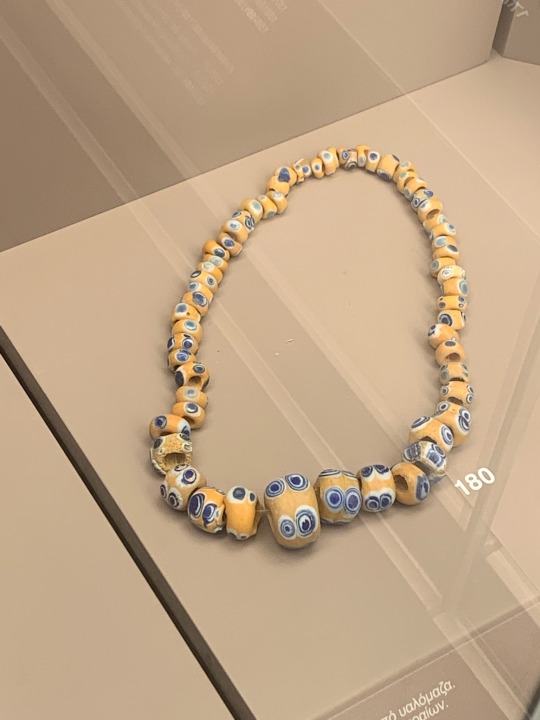

Glass bead necklaces
Found at the bottom of a well near the Temple of Artemis in Brauron (modern-day Vravrona), Greece
Photos by me, November 2022
#tagamemnon#Greece#Artemis#archaeology#jewelry#Ancient Greece#museums#Temple of Artemis#Greece travel
630 notes
·
View notes
Text
thinking about how hecate is iconographically associated with keys and often portrayed in art holding a set of them. lesbian goddess.
#its actually really interesting bc keys depicted on mortal women mark priesthood (theyre the keys to the temple/its treasury)#but on deities keys mark a liminal function overseeing the transition into/threshold of death#--theyre the keys to the gates of hades#which means they enable the bearer to guide others into hades and (uniquely) to exit herself#so io is κλειδοῦχος (=priestess) of hera and iphigenia is κλειδοῦχος of taurian artemis#and priestesses are often shown on their funeral stelai holding temple keys to commemorate their role#but hecate is κλειδοῦχος in the divine sense and so is persephone (aeacus and anubis also)#mine
178 notes
·
View notes
Text
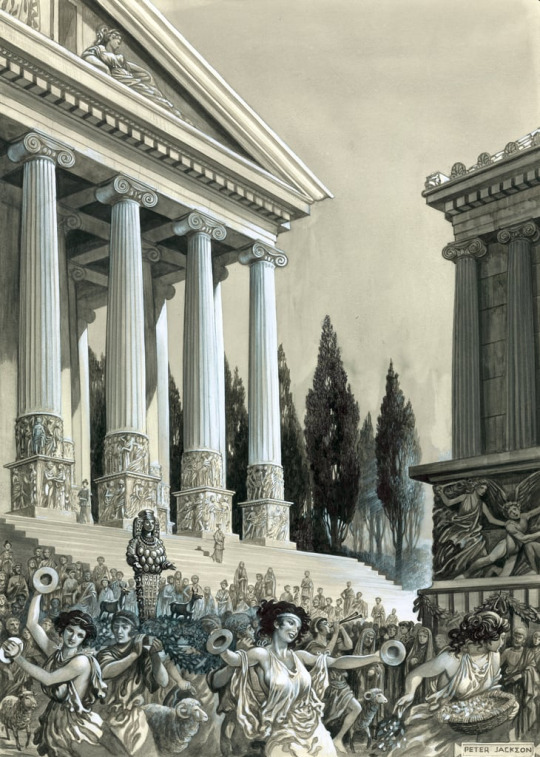
Temple of Diana at Ephesus by Peter Jackson
#temple#temples#diana#artemis#ephesus#art#peter jackson#history#ancient greek#ancient greece#europe#european#asia#religious art#religion#religious#gods#greek#greece#goddess#roman#classical#antiquity
330 notes
·
View notes
Text
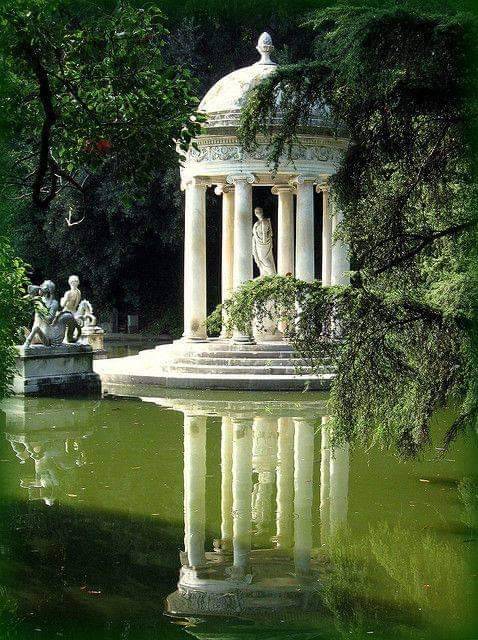
Temple of the Goddess Artemis, Genoa, Liguria, ITALIA
#tempio#temple#templo#dea#goddess#diosa#artemis#artemide#artemisa#genoa#genova#liguria#italia#italy#europe#europa
208 notes
·
View notes
Text
The Sanctuary of Artemis Brauronia (Brauronion)




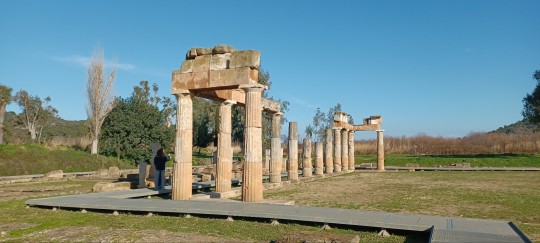

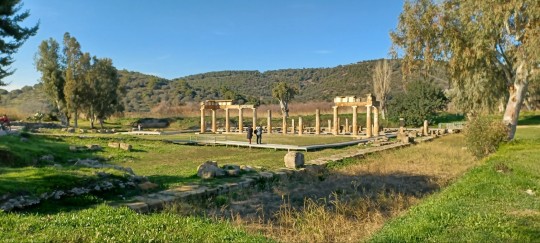
Artemis Brauronia, protector of women in pregnancy and childbirth, had her main sanctuary at Brauron, a demos on the east coast of Attica.
(Please do not use photos without permission)
#Artemis#brauronia#Epithets#Temples#My posts#My pics#I want to go back to Greece#I need to upload more of my photos from my trip#god#I want to go back
210 notes
·
View notes
Text
idk if i am just late to the party but like Artemis is a true ace/aro représentation
#girl literally said “i'll be a virgin forever”#turned Callisto into a bear after she became pregnant from Zeus#and 'killed' a girl for loving a boy inside her temple#love her for that#aroace#asexual#aromantic#artemis#greek mythology
39 notes
·
View notes
Text

Tales from Shakespeare : Lamb, Charles, 1775-1834
#diana#artemis#roman gods#pericles#shakespeare#temple of diana#ullustration#vintage illusion#charles lamb
30 notes
·
View notes
Text

another dunmeshi oc... im being self indulgent here and making a character i ship with the whole main party. artemis is kind and gentle but shes no pushover, and can easily pick up on peoples intentions.
20 notes
·
View notes
Text
Archaeologists have uncovered a 7th-century BC temple dedicated to Artemis on Euboea, Greece.
Excavations have revealed various artifacts, including a curious ivory head with Egyptian features. The site also shows evidence of ancient sacrificial rituals and a history of fire and restoration.
This discovery, a result of Swiss-Greek collaboration, sheds light on the worship of Artemis, the Greek goddess of the hunt, and adds to our understanding of ancient Greek culture.
#ArtemisTemple#GreekArchaeology#HistoricalDiscovery#Temple#Greece#Artemis#god#Greek Gods#Greek Olympians#sacrifice
45 notes
·
View notes
Text

2,600-Year-Old Temple Filled With ‘Exotic Offerings’ Found in Greece
In 2017, while exploring a sanctuary devoted to a goddess in Greece, archaeologists discovered the first traces of a monumental structure at the heart of the sanctuary.
Now, after years of excavations, the team has unearthed what has been identified as a temple filled with treasures, altars and “exotic offerings,” according to a Jan. 8 news release from the Swiss School of Archaeology in Greece, which oversaw the excavation with the help of the Ephorate of Antiquities in Euboea.
The temple was discovered “at the heart of the sanctuary of Artemis Amarysia,” researchers said. Artemis was the Greek goddess of wild animals as well as chastity and childbirth.
Archaeologists said the temple — which was built sometime toward the end of the seventh century B.C. — “held a number of surprises,” starting with is floor plan. The building was apsidal, meaning it had a semi-circular dome-like structure at one end.

This kind of floor plan, popularized during the Early Christian era between the fourth and eighth centuries A.D., was “quite unusual” for the time the temple was built, the team said.
The temple was “larger than originally anticipated,” measuring about 100 feet, according to experts. This measurement is symbolic, and several other monuments from the same period share the same dimensions.
Inside the structure, researchers found “another surprising discovery”: an abundance of hearths or altars.

Typical Greek sanctuaries of the time built these structure outside of the temple, but archaeologists said they found the stone platforms — covered with thick layers of ash and bones — within the building.
One altar, shaped like a horseshoe, appears to have occupied a pronaos — a vestibule surrounded by columns on the exterior of the temple — and has evidence that it was used as early as the end of the eighth century B.C., predating the temple, officials from Greece’s Ministry of Culture said in a Jan. 8 news release.
The team also discovered a rich collection of offerings, it said.
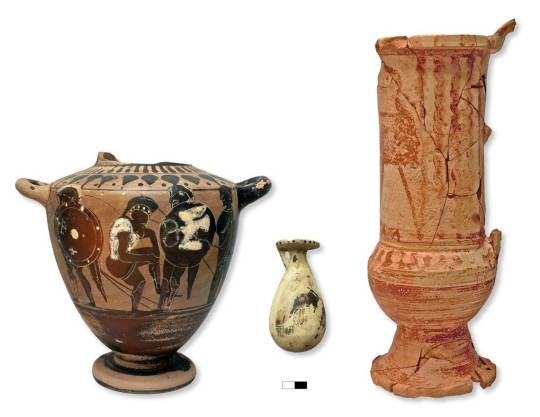
Among their finds were alabaster artifacts, vases, ritual water jugs, amulets, bronze and iron fittings, and precious jewelry made of gold, silver, coral and amber, officials said in their release.
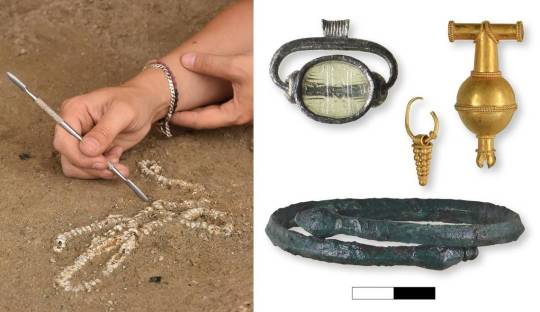

Experts also identified a “finely chiseled ivory head with Egyptian features,” they said. The “exotic” object was “unrecognizable” when first identified, but it has been restored.

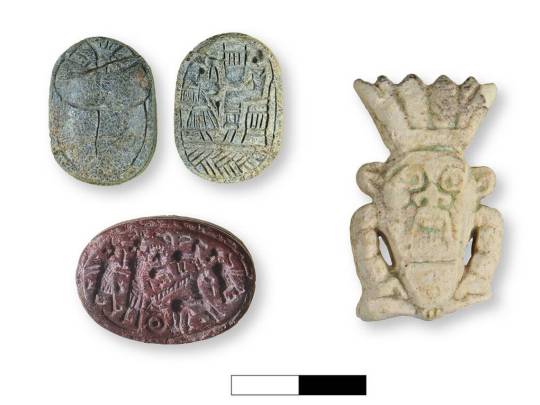
Evidence at the temple indicates that it partially burned down in the later half of the sixth century B.C., according to archaeologists. The building was temporarily restored with mud brick walls until it could be entirely replaced and restored at the end of the century.
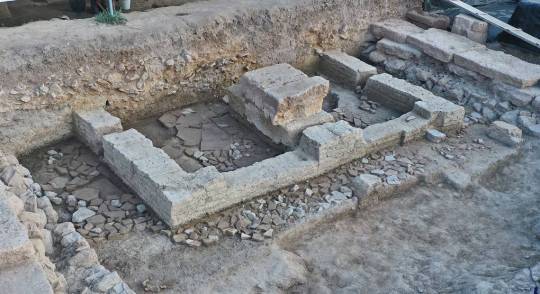
EVIDENCE OF AN EVEN EARLIER TEMPLE
Beneath the foundation of the temple, archaeologists said they discovered deep trenches containing remains from a building possibly dating to the ninth or eighth century B.C.

Bronze animal figurines from the same period and a terracotta bull’s head dating to the late Bronze Age — roughly 1200 B.C. — were also found in the trenches, according to researchers. Excavations of the lower levels of remains are ongoing, but early finds indicate that the site was used by Artemis worshipers earlier than the temple’s construction.
BRONZE AGE REMAINS NEARBY
The sanctuary of Artemis Amarysia is at the foot of a hill that was occupied during the Bronze Age, experts said.
Excavations of the hill have identified “imposing walls” that likely belonged to a third millenium B.C. fortification system, archaeologists said.
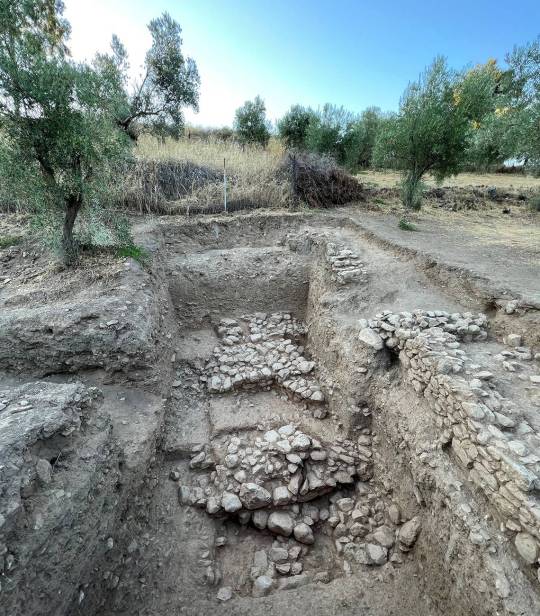
A tomb, filled with skeletons and offerings, was also unearthed from the hill, according to Greek officials.
Researchers continue to explore the region to determine how the temple and sanctuary fit into the broader “ancient landscape,” they said.
Amarynthos is on the Greek island Evia, also known as Euboea, which is off the country’s southwest coast.
By MOIRA RITTER.
#2600-Year-Old Temple Filled With ‘Exotic Offerings’ Found in Greece#he sanctuary of Artemis Amarysia#Greek island Evia#temple#ancient artifacts#archeology#archeolgst#history#history news#ancient history#ancient culture#ancient civilizations#Ancient Greece#greek history#greek art
40 notes
·
View notes
Text
the way Ares said Zeus had all his children also searching for the master bolt when in fact he actually put all his children in a mission to jeopardize percy's quest
#pj#pjo#percy jackson series#percy jackson#maybe it started after the medusa's head incident#but he totally went: ok so athena u try to get them killed in your temple#and if they survive ares has to entertain them a lil bit#maybe have one of them sacrifice or sumn??? idk work this out with hephaestus#and then u send them kids to the lotus cassino and they can root there#hermes can distract them until the mission is over#the kids: and what about the master bolt?????#zeus: er.... u can try and find that too i guess#u cant tell me this isn't what happened#and in the end hephaestus wasnt feeling the vibes#hermes was very two faced about it#and artemis just left him on read
32 notes
·
View notes
Text
Theoi Info Sheets Series Part 6: Apollo & Artemis - The Divine Twins
"... but the opinion most universally received was, that Apollo, the son of Zeus and Leto, was born in the island of Delos, together with his sister Artemis; and the circumstances of [their] birth there are detailed in the Homeric hymn on Apollo, and in that of Callimachus on Delos."
- Comp. Apollod. i. 4. § 1; Hygin. Fab. 140.
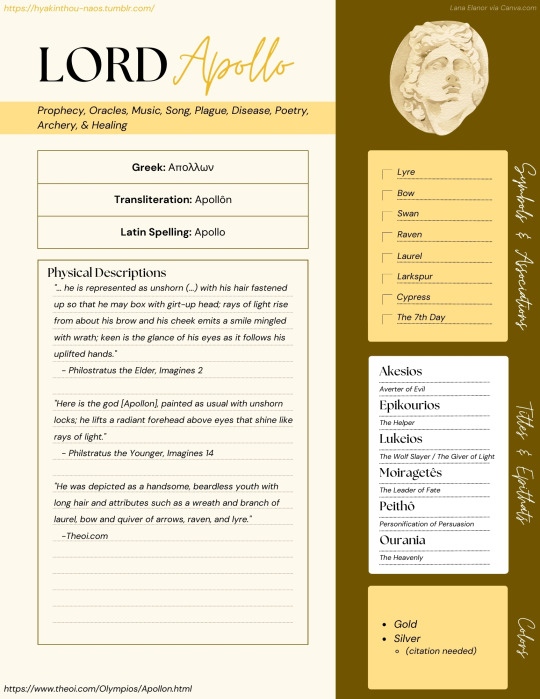

I would describe my relationship with The Divine Twins as... unbalanced.
I have never felt drawn or called to Lady Artemis; despite my love of deer, the woods, and the years I spent working in childcare - I have always felt that the doors of Her temple were closed to me. I personally feel that part of this lies in my transgender identity; this is not to say that transmen or men in general cannot worship Artemis - I've seen quite a few transmen on Tumblr who are joyous devotees to Her. But personally, I have always felt distanced from Artemis.
I do feel as though Artemis tried to call to me when I was young, but I did not feel aligned with Her energies or drawn to Her domains. Then, when I transitioned, I got the sense that Artemis felt betrayed; like She had laid claim to me and was waiting for me to join Her retinue - but instead I left womanhood behind and She felt personally insulted.
I say all of this, not in any way to disrespect Lady Artemis - or to say my experience is indicative of her energy and character towards other devotees. I simply say all of this to share my experience.
On the reverse - Lord Apollo is my patron deity. There is no God or entity that I hold in higher regard. I feel as though Lord Apollo has been quietly waiting for me all my life, almost as if He knew my destiny lied in being his devotee but He wanted me to come to Him on my own.
That isn't to say he hasn't been present in my life before my journey into Hellenic Polytheism - but I do believe He has let the muses guide me rather than His own hand. I felt Kleio enter my life in middle school when I first began writing poetry, and Gods - Euterpe and Melpomene have been with me since I began writing music in the second grade. Ouranie entered my life later, moreso in college when astrology became a larger part of my life and personal practice. But now I've gone off on a tangent, haha.
I've written about Lord Apollo in many other posts on my blog - so feel free to check the Lord Apollo tag if you'd like to read more about my relationship and devotion to him.
*You may have seen this info sheet before on thewitchfarhan.tumblr.com - that is my old Tumblr. These info sheets are my own creation - please do not repost without credit.
#Theoi Info Sheets Series#Theoi Info Sheets#The Temple of Hyacinthus#Apollo#Lord Apollo#God Apollo#Apollo Deity#Artemis#Lady Artemis#Goddess Artemis#Artemis Deity
17 notes
·
View notes
Text

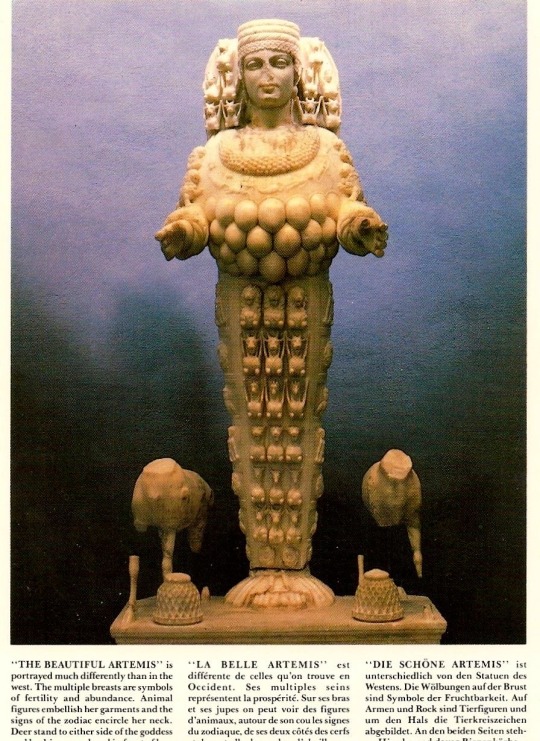


Temple of Artemis at Ephesus; Statue of Artemis.
In Ephesus, Artemis' aspects that they focused on was that she is the goddess of childbirth and fertility, not the hunt. The temple is considered bigger than Zeus' temple, and it's most famous destruction happened in 401 AD. Some sources claim it was by a man named Herostratus, seeking fame. It has been destroyed and rebuilt multiple different times in Greek history.
#dark academia#light academia#chaotic academia#art history#history#greek mythology#greek gods#ancient history#ancient greece#temple of Artemis#in Ephesus#the academia
19 notes
·
View notes
Text
Interesting shape. Seems weirdly modern for an ancient temple.
19 notes
·
View notes